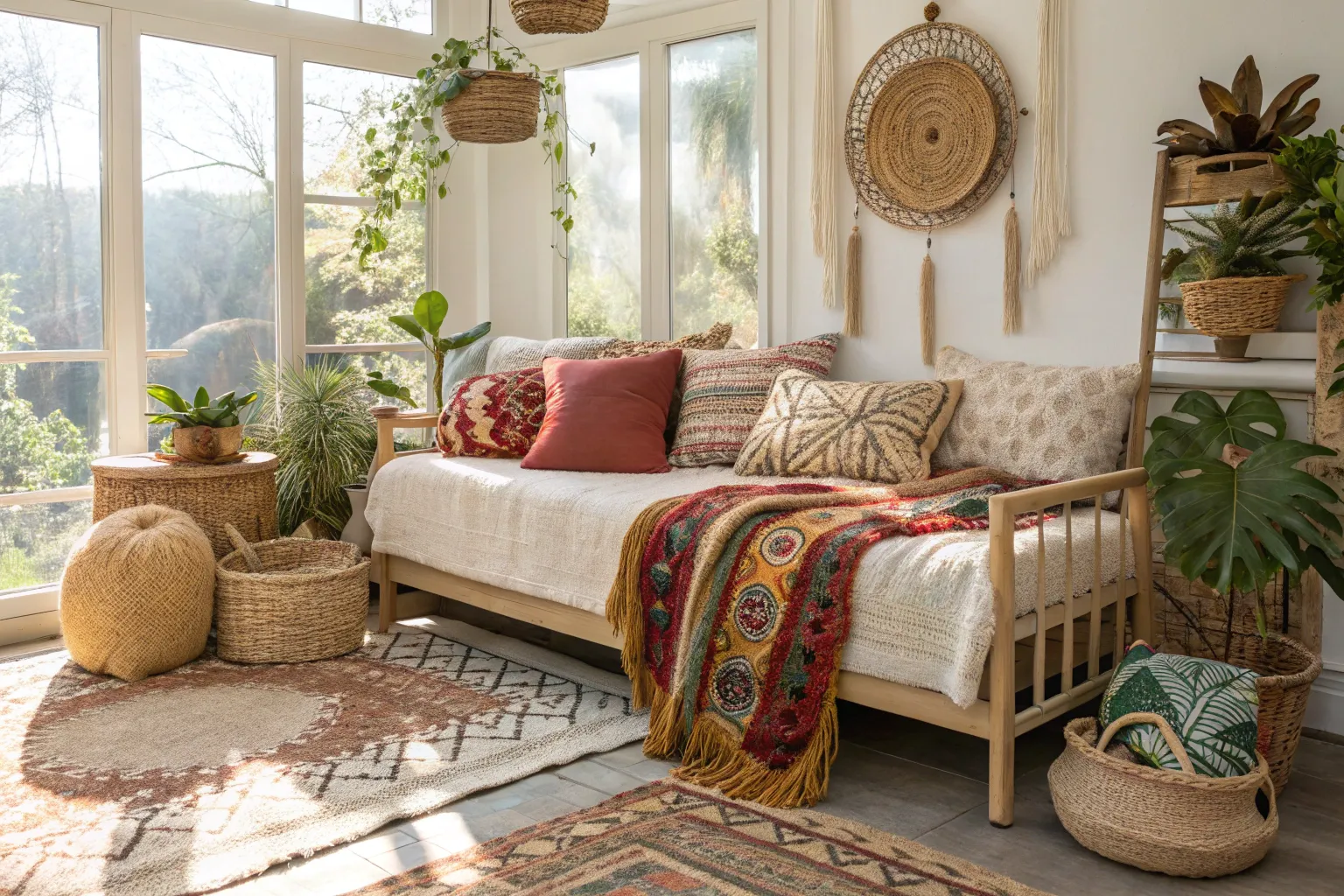Creating a bohemian daybed isn’t just about constructing a piece of furniture—it’s about crafting a sanctuary that embodies the free-spirited, globally-inspired aesthetic that defines boho design. This comprehensive guide will walk you through both the structural foundation and the artful textile styling that transforms a simple daybed into a statement piece worthy of your dream space.
Understanding the Boho Daybed Foundation
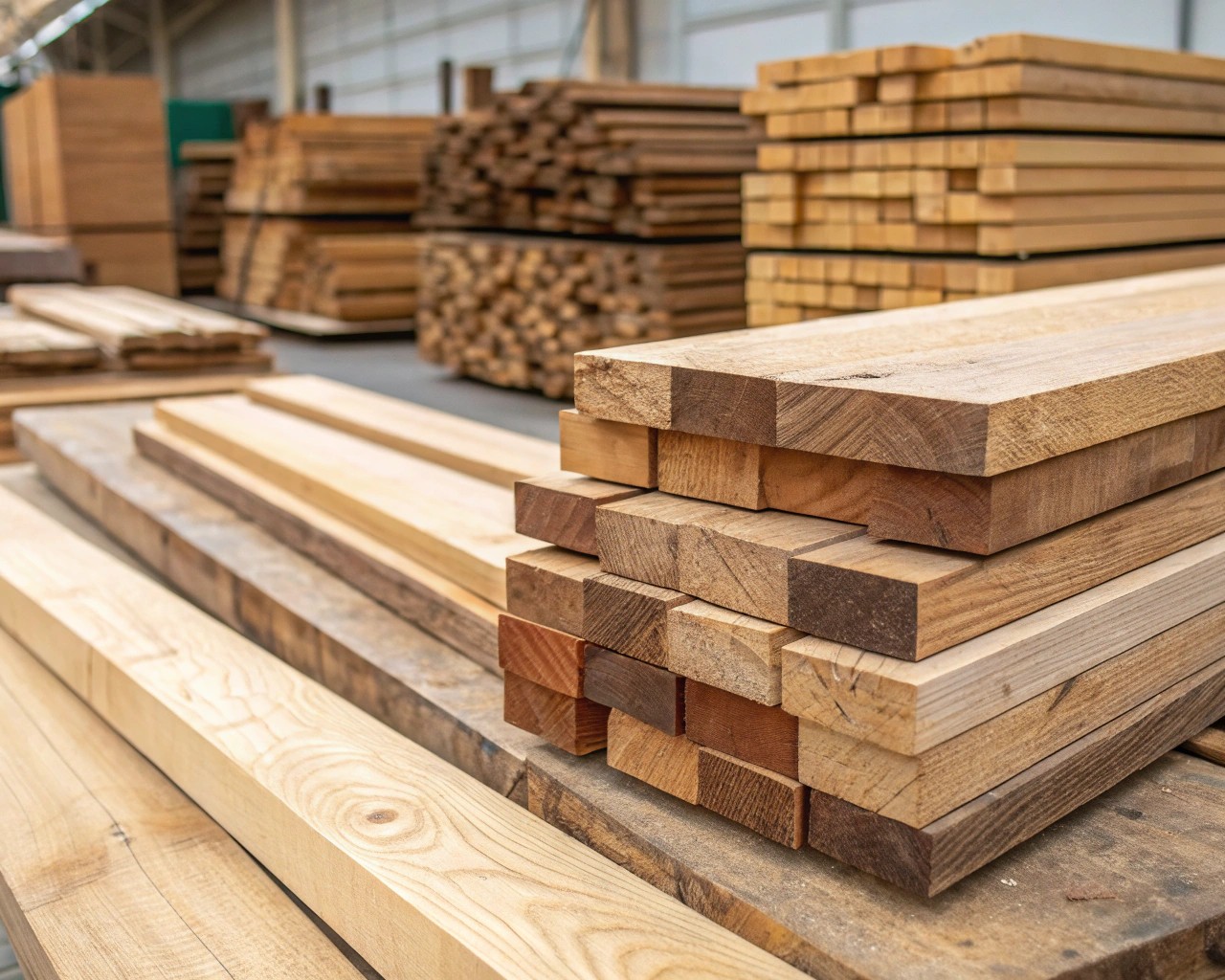
Essential Materials for Your Daybed Base
Building a robust daybed base requires careful material selection that balances durability with the natural aesthetic that bohemian style demands. The most reliable foundation combines 2×4 lumber for the frame structure with 3/4-inch plywood for panels, creating a daybed that can support both sitting and sleeping functions.
For outdoor applications, consider using pressure-treated pine or naturally weather-resistant woods like cedar or teak. Cedar offers excellent moisture resistance without chemical treatments, while teak provides exceptional durability for outdoor use, though at a higher cost. The key is selecting lumber that will maintain structural integrity while developing the natural patina that complements boho aesthetics.
Hardware essentials include:
- 3-inch galvanized deck screws for frame assembly
- 1 5/8-inch screws for slat attachment
- Pocket hole screws for clean joinery
- Wood glue for additional joint strength
- Metal angle brackets for reinforcement points
Constructing the Daybed Frame
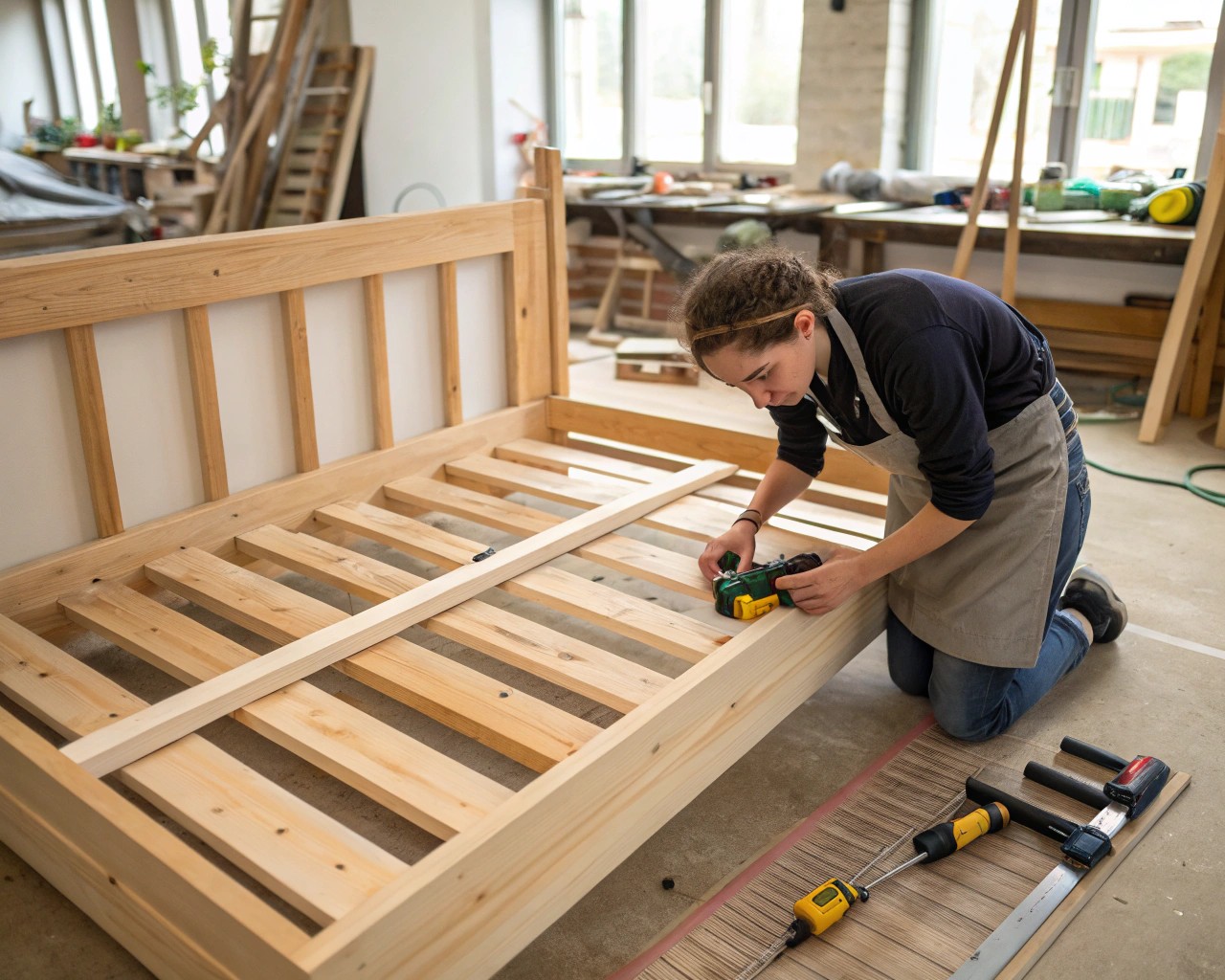
The construction process begins with creating a rectangular base frame using 2×4 lumber cut to appropriate lengths—typically 75 inches for length and 39 inches for width to accommodate a twin mattress. This foundation supports both the seating platform and the distinctive three-sided frame that defines daybed functionality.
Critical construction steps:
Frame Assembly: Start by constructing the base rectangle, ensuring all corners are square and joints are reinforced with both wood glue and screws. The front characteristic daybed silhouette.
Slat System: Install support slats every 6-8 inches using 1×4 lumber to create a stable mattress platform. These slats distribute weight evenly and provide the flexibility needed for comfortable seating and sleeping.
Side Panels and Back: Cut side panels from 3/4-inch plywood and attach them perpendicular to the base frame. The back panel should be taller than the sides—typically 32-38 inches high—to create the distinctive daybed profile.
Sustainable and Eco-Friendly Approaches
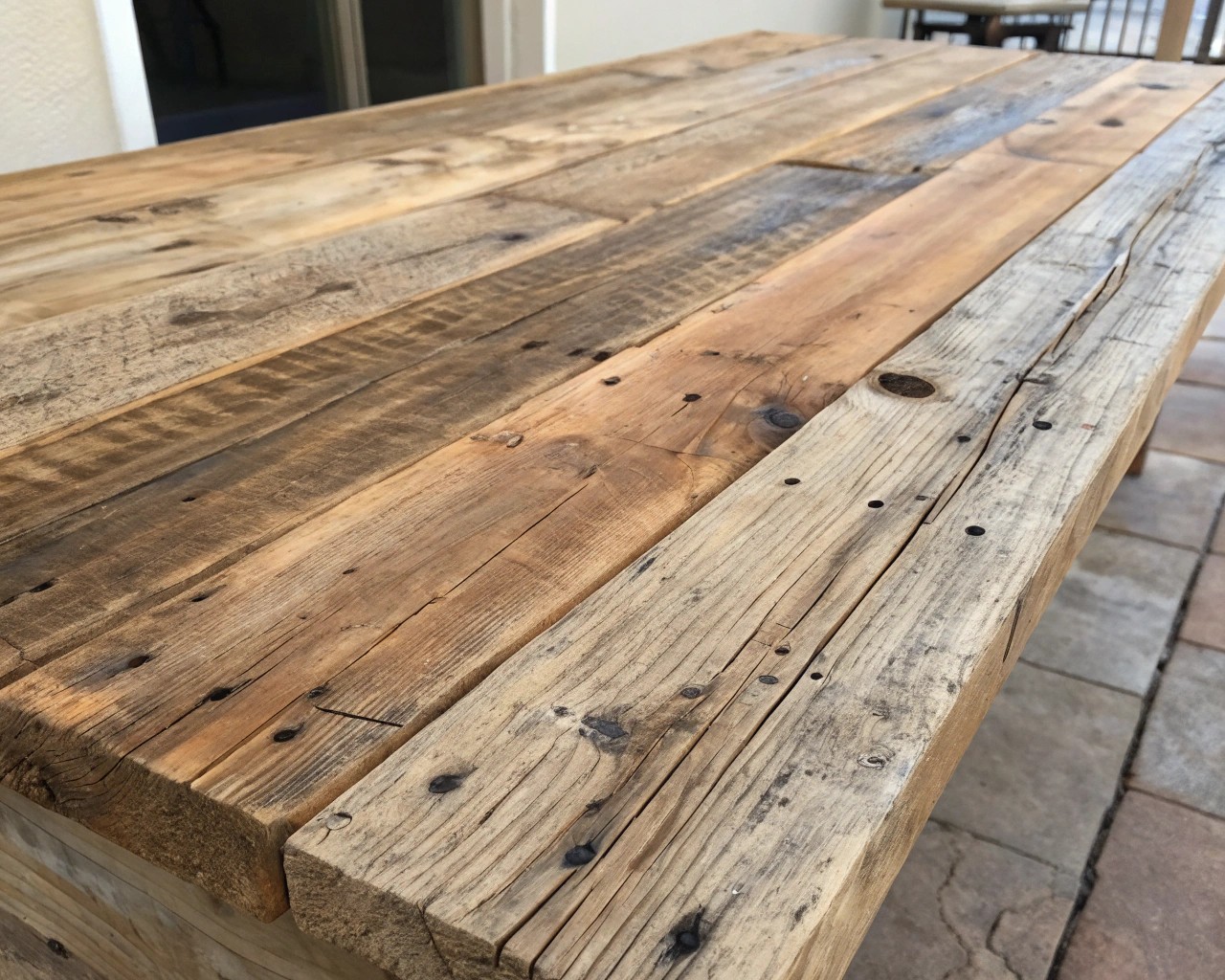
I’ve found that incorporating sustainable practices not only benefits the environment but often results in more beautiful, character-rich furniture. Reclaimed wood from old pallets, barn boards, or salvaged construction materials can create stunning daybed bases with built-in patina and story.
For wood treatments, avoid chemical-heavy stains and sealers. Instead, opt for natural finishes like:
- Linseed oil for deep penetration and water resistance
- Tung oil for long-lasting protection with minimal maintenance
- Beeswax finishes for a subtle sheen and natural protection
- Mineral-based treatments for outdoor applications
These natural treatments not only protect the wood but enhance the grain patterns that are so important to bohemian aesthetics.
Mastering Boho Textile Styling
The Foundation Layer: Mattresses and Base Textiles
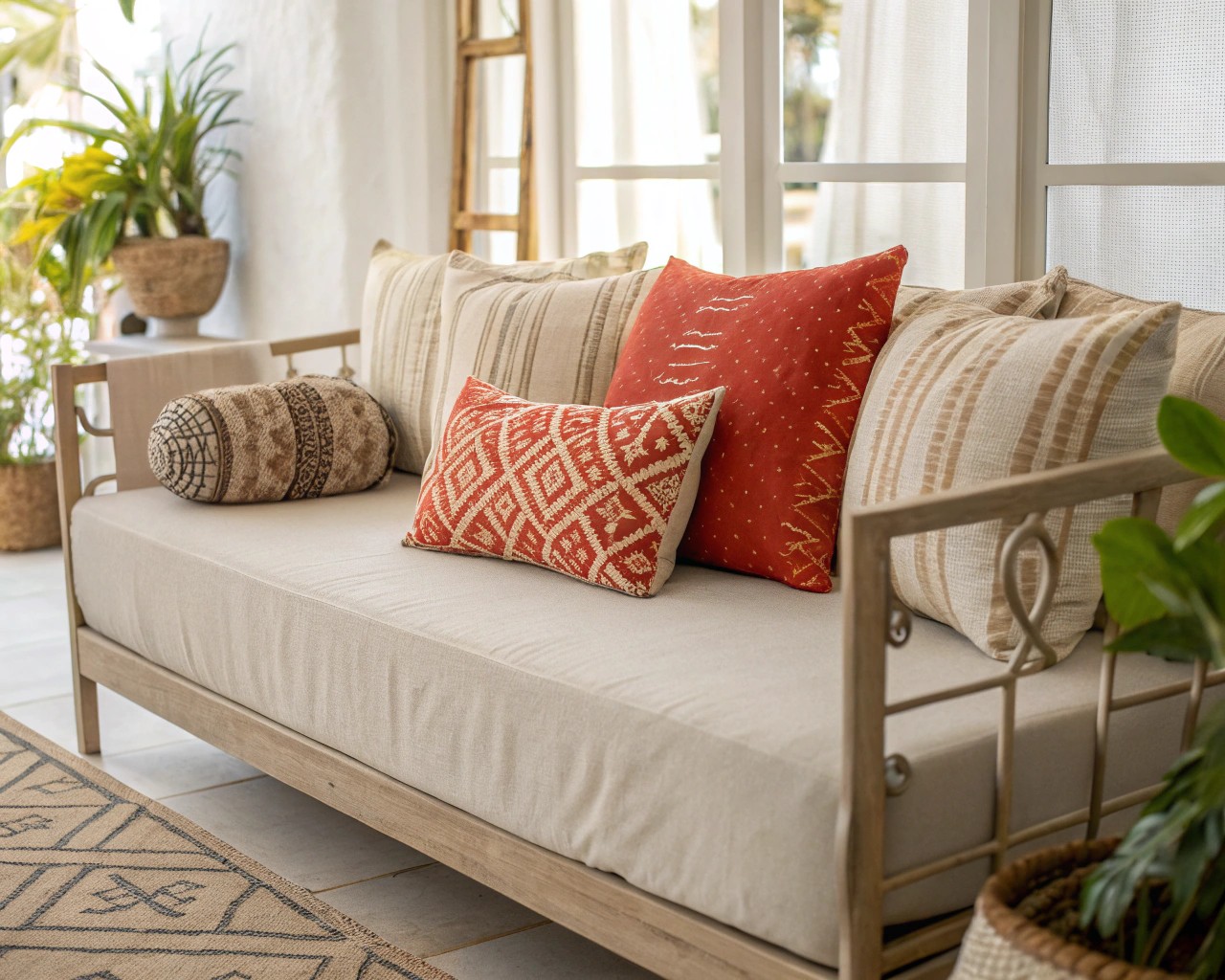
The textile journey begins with your mattress selection and base coverings. For authentic boho style, choose a mattress cover in natural, undyed linen or organic cotton. These materials provide the neutral foundation that allows your decorative textiles to shine while maintaining the earthy, natural feel essential to bohemian design.
Pro tip: Layer a thin cotton or linen mattress protector beneath your decorative cover. This practical addition extends the life of your mattress while providing an extra layer of softness that enhances the overall comfort experience.
Creating Visual Interest Through Pattern Mixing
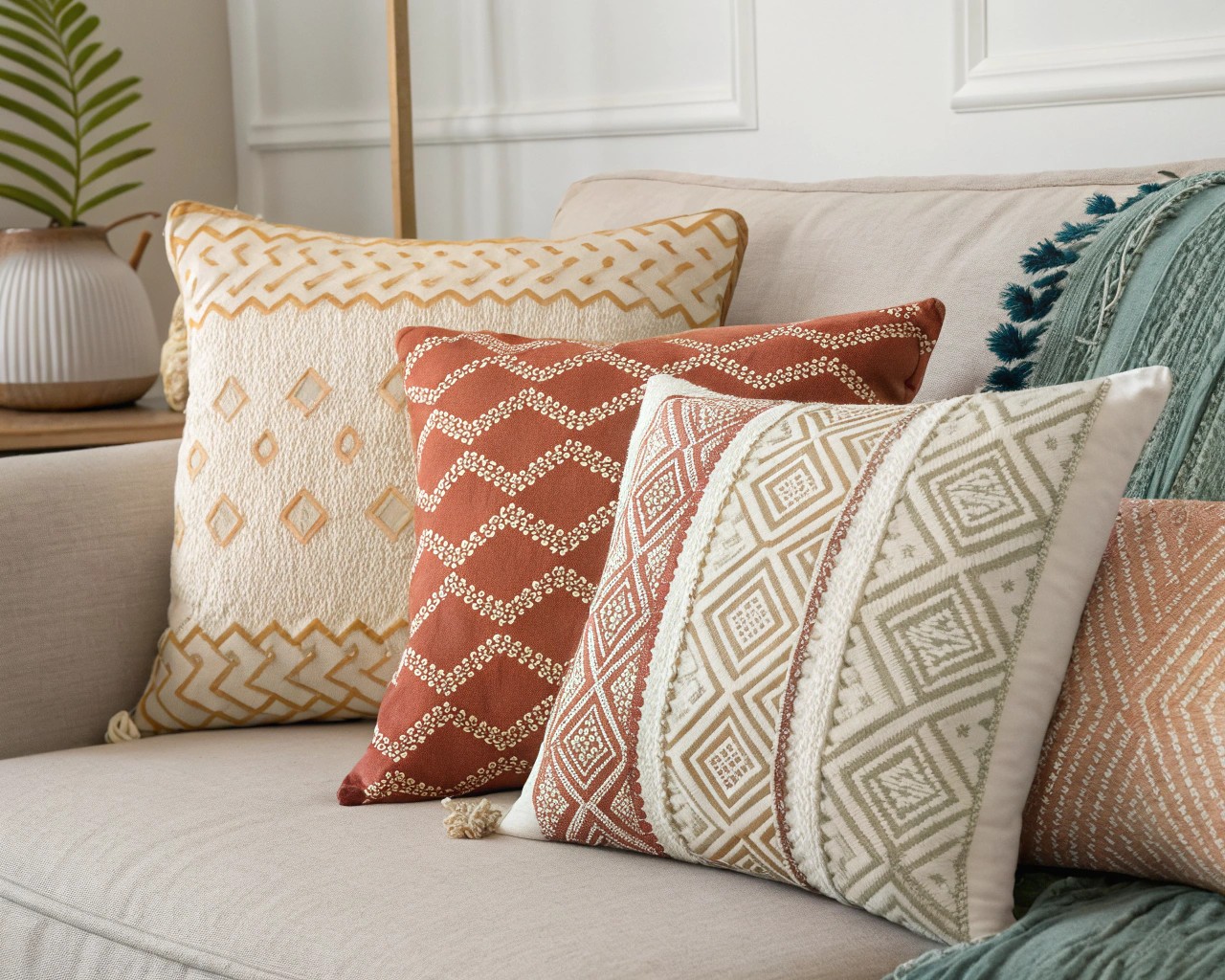
The art of bohemian textile styling lies in masterful pattern mixing that appears effortless yet intentional. Start with a cohesive color palette of 6-8 hues that include both warm and cool tones—perhaps terracotta, sage green, dusty rose, cream, and deep indigo.
Successful pattern combinations include:
- Geometric prints paired with flowing florals
- Tribal motifs mixed with paisley patterns
- Striped textiles combined with intricate mandalas
- Block prints layered with organic, nature-inspired designs
The key is varying the scale of patterns—pair large, bold designs with smaller, more intricate ones to create visual balance without overwhelming the space.
Pillow Layering Techniques
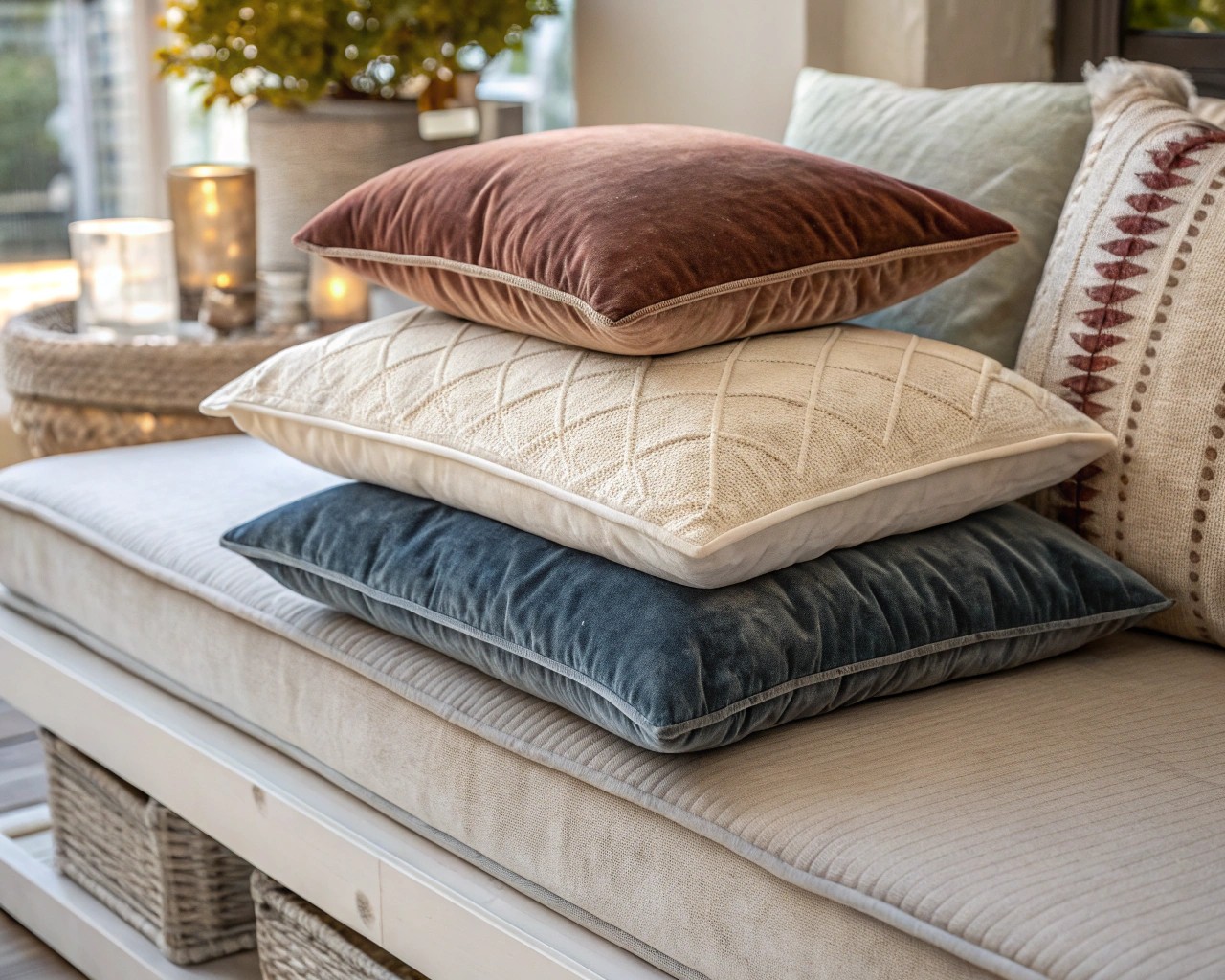
Pillow arrangement is where boho styling truly shines. Begin with 2-3 Euro pillows (26×26 inches) against the back wall as your foundation layer. These larger pillows should be in complementary but not matching fabrics—perhaps one in solid linen, another in a subtle geometric print.
Layer progression:
1. Foundation layer: 2-3 Euro pillows in coordinating solids or subtle patterns
2. Middle layer: Standard-sized pillows (20×26 inches) in bolder patterns or textures
3. Accent layer: 2-4 smaller decorative pillows in varied shapes—lumbar pillows, round cushions, or uniquely shaped accent pieces
4. Statement piece: One standout pillow with fringe, tassels, or exceptional texture
Textile variety is crucial: Incorporate velvet, linen, cotton, jute, and wool textures. Add pillows with embroidered details, macramé elements, or hand-woven patterns to enhance the artisanal quality that defines bohemian style.
Throw and Blanket Styling
Throws serve both functional and aesthetic purposes in boho daybed styling. Drape a large, textured throw diagonally across one end of the daybed, allowing it to cascade naturally. Choose materials like chunky knit wool, loosely woven cotton, or vintage-style blankets with interesting patterns or fringe details.
Layering strategy: Use 2-3 throws of different weights and textures. A lightweight linen throw can be casually folded at the foot of the daybed, while a heavier wool blanket with geometric patterns can be artfully draped for both visual interest and practical warmth.
Natural Fiber Selection and Sustainability
Prioritize natural fibers that align with bohemian values of connection to nature and sustainability. Cotton, linen, hemp, and wool not only feel better against the skin but also age beautifully, developing character over time rather than simply wearing out.
Natural fiber benefits:
- Superior breathability for comfort in all seasons
- Improved indoor air quality through reduced off-gassing
- Enhanced durability when properly cared for
- Beautiful aging that adds to the bohemian patina
- Environmental sustainability through biodegradability
Seasonal Adaptation and Maintenance
One of the most rewarding aspects of textile styling is the ability to refresh your daybed’s appearance seasonally. In summer, emphasize lighter weights and cooler colors—white linens, pale blues, and soft greens. For winter, introduce richer textures and warmer tones—deep burgundies, golden ochres, and thick wool textures.
Maintenance tips:
- Rotate pillow covers seasonally to prevent uneven fading
- Store off-season textiles in breathable cotton bags
- Regularly air out natural fiber pillows and throws
- Spot clean immediately to prevent stains from setting
- Professional cleaning for valuable or delicate pieces annually
Creating Cohesive Outdoor Boho Spaces
For outdoor daybed styling, weather resistance becomes crucial without sacrificing boho aesthetics. Choose solution-dyed acrylic fabrics that resist fading and moisture while maintaining the soft, natural appearance of traditional textiles.
Outdoor-specific considerations:
- Select fabrics with UV protection to prevent color degradation
- Ensure pillow inserts are quick-drying and mold-resistant
- Store textiles during harsh weather to extend their lifespan
- Use waterproof storage solutions that allow air circulation
- Consider performance fabrics that mimic natural textures
Final Styling Philosophy
Remember that authentic bohemian style celebrates imperfection and personal expression over rigid rules. Your daybed should reflect your travels, experiences, and personal aesthetic journey. Mix vintage pieces with new textiles, combine high-end finds with thrift store treasures, and don’t be afraid to include handmade elements that tell your unique story.
The most successful boho daybeds feel collected over time rather than purchased all at once. Build your textile collection gradually, allowing each piece to find its natural place in your evolving design story. This patient approach not only creates more authentic results but also allows you to invest in quality pieces that will serve as the foundation of your bohemian haven for years to come.

